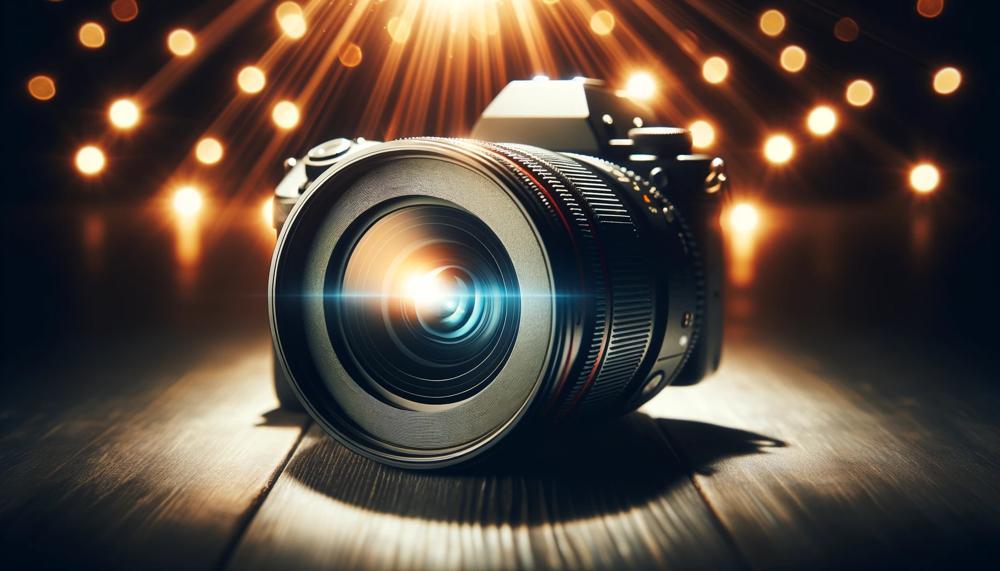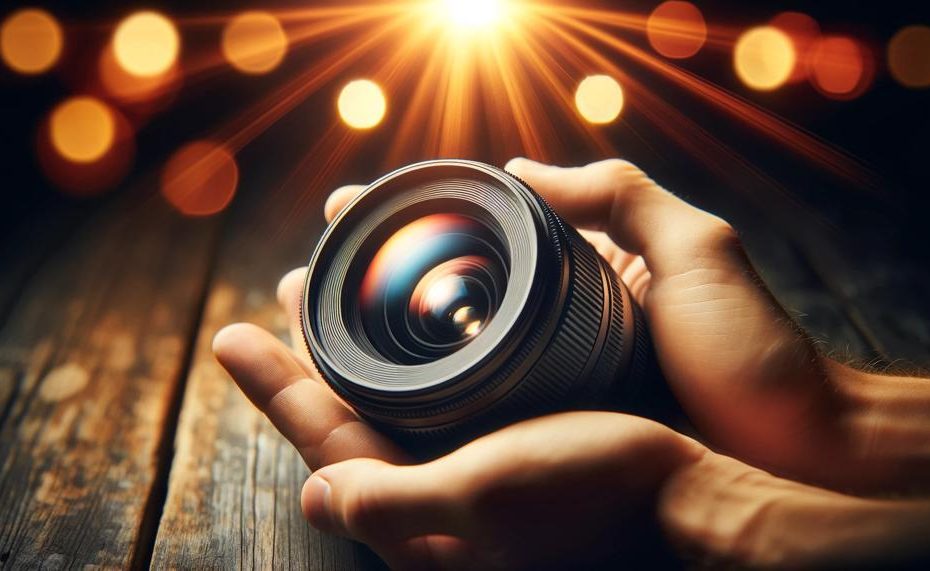We’ve all been there – eagerly snapping away, trying to capture the perfect shot, only to be disappointed by blurry or damaged images. And while we may blame shaky hands or faulty equipment, there’s one culprit that often goes unnoticed: bright light.
So, can bright light damage camera lens?
Yes, bright light can damage a camera lens:
- Direct sunlight: The sun’s heat and UV rays can cause the lens coatings to deteriorate, which can result in a loss of image quality. Prolonged exposure can also cause the plastic components of the lens to warp or melt.
- Intense light: Intense light can cause the image sensor to deteriorate or produce a white blur effect in photographs. It can also cause damage or even permanent burn marks on the sensor.
- Laser light: Camera sensors are sensitive to intense light, including laser light. When a laser beam directly hits the sensor, it can overload the pixels and cause permanent damage.
Don’t let bright light ruin your shots – stay informed and take care of your camera lenses for picture-perfect results. Happy shooting.

Contents
- 1 Does Direct Sunlight Damage Phone Cameras?
- 2 Can You Take a Picture of the Sun on Your Phone?
- 3 Time Lapse Photos of the Sun Pose a Higher Risk
- 4 Smartphones May Incur Less Damage Than Traditional Lenses
- 5 Lens Scratches Can Make Sun Damage Worse
- 6 How to Protect Your Phone Camera the Right Way
- 7 Technically, You Could Take a Quick Photo of the Sun
- 8 Better Photos, Longer Lens Life
- 9 Conclusion
Does Direct Sunlight Damage Phone Cameras?
Direct sunlight can have a significant impact on the quality of phone camera lenses in various ways. Let’s take a closer look at how direct sunlight can affect phone camera lenses:
- Distorted or misshapen lens: Being exposed to direct sunlight can cause the lens to become distorted or misshapen, resulting in distorted photos and difficulty capturing clear images.
- Lens flare: Shooting directly into the sun can cause lens flare, resulting in overexposed images with a hazy or washed-out appearance.
- Sun damage over time: While modern phone cameras have some protection against sun damage, it is still possible for it to occur over time. Some signs of sun damage on a phone’s camera sensor include strange artifacts, dark/black areas, over/underexposed images, off colors, and loss of sharpness.
- Internal component damage: Exposure to sunlight can also cause internal components of a camera to expand and contract, potentially leading to failure over time.
Can You Take a Picture of the Sun on Your Phone?
While it’s possible, it’s not advised. The sun’s powerful energy and light can potentially damage your camera’s internal components, leading to distorted images and potential failure over time.
Therefore, it’s crucial to take necessary precautions when attempting to capture the sun on your phone.
| Measures to Take | Why They Matter |
| Use a certified solar filter | The filter acts as a shield, safeguarding your camera’s sensor and circuitry from the intense light and heat of the sun. |
| Switch off flash and autofocus | These features can further amplify the light and energy entering your camera, causing more potential damage. |
| Adjust exposure settings | This will reduce the amount of light and energy penetrating your camera, decreasing the risk of damage. |
| Consider purchasing a specialized filter | A filter specifically designed for capturing photos of the sun can provide added protection for your camera’s sensor while producing higher quality images. |
Aside from these precautions, avoid shooting directly into the sun. Instead, try capturing the sun at an angle or during sunrise or sunset when the light is less intense. Not only will this protect your camera, but it will also result in more captivating and unique photos.
Time Lapse Photos of the Sun Pose a Higher Risk
The act of capturing time-lapse photos of the sun comes with a significant risk of damaging your camera lenses. This is primarily due to the prolonged exposure to direct sunlight, which can cause irreversible harm to the camera’s sensors and lenses, even when using filters. The intensity of light emitted by the sun is simply too powerful for the camera’s sensors to handle, making it a potential hazard. This danger is not only limited to professional cameras, as even smartphones with cameras are at risk of damage from the sun’s brightness.
When taking time-lapse photos, the camera is exposed to direct sunlight for an extended period, increasing the risk of damage. This is because the camera’s components, such as the sensor and lens, are continuously exposed to intense light and heat. In contrast, taking a single photo does not expose the camera to as much direct sunlight.
To mitigate this risk, it is crucial to use protective lenses or shoot from a shaded area when capturing time-lapse photos of the sun. Additionally, protecting your eyes while photographing the sun is also essential as eye strain can harm your camera as well.
Using ND filters or solar filters can also help reduce the amount of light and heat that reaches the camera. However, when photographing the sun directly, a solar filter is necessary to protect both your camera and your eyes from potential damage.
Smartphones May Incur Less Damage Than Traditional Lenses
Smartphones may incur less damage than traditional lenses due to the unique features and design of their lenses. Unlike traditional lenses, smartphones have smaller lenses, built-in filters, and automatic exposure adjustment.
Additionally, they have a shorter focal length and faster shutter speeds, which further protect the lens from intense light. Moreover, the durable materials used in smartphone lenses make them less susceptible to damage from bright light.
These features work together to create a protective barrier for the lens, minimizing the risk of damage. This is especially beneficial for those who regularly use their smartphones in bright environments, such as outdoor photographers or content creators.
Furthermore, smartphones offer added convenience and portability compared to traditional lenses. With a smartphone, users can easily take high-quality photos or videos without the need for additional equipment. This makes it a popular choice among professionals and hobbyists alike.
With the advancements in smartphone camera technology, the quality of images captured has significantly improved. Many professional photographers now use smartphones in addition to their traditional cameras for certain shots.
Lens Scratches Can Make Sun Damage Worse
It may seem counterintuitive, but it’s true. Those tiny blemishes on your camera lens can act like miniature magnifying glasses, amplifying the amount of sunlight that enters the lens. This increased exposure to harmful UV rays can lead to more significant damage and potentially shorten the lifespan of your lens.
As a photographer, it’s essential to regularly check your lenses for scratches and take steps to prevent or repair them. Not only will this help protect your equipment, but it will also reduce the risk of sun damage and ensure that your lenses last longer.
But why does this happen? Well, when light passes through a scratch on your lens, it becomes concentrated and focused. This means that even a small scratch can have a significant impact on the amount of sunlight that enters your camera. And since UV rays are known to cause damage to camera lenses over time, it’s crucial to keep those scratches in check.
How to Protect Your Phone Camera the Right Way
Protecting your mobile device’s camera from the potential damage caused by bright light is crucial in ensuring it continues to function at its best. Here are some effective ways to safeguard your phone camera from the harmful effects of intense light:
- Avoid pointing your camera directly at bright lights: Exposure to intense light sources can cause harm to your camera’s sensors and lenses. Instead, try adjusting your angle or positioning yourself in a way that avoids direct exposure.
- Adjust shutter speed and exposure: By reducing the time your camera is exposed to bright light, you can minimize the risk of damage. You can also adjust the exposure settings on your phone’s camera or use filters to decrease the amount of light entering the lens.
- Use UV filters: Sunlight’s UV rays can damage your phone’s camera lens and sensor, resulting in a decrease in picture quality. By using a UV filter, you can protect your camera from these harmful rays.
- Invest in high-quality lenses: Superior coatings found in higher-quality lenses can help protect against the damaging effects of bright light. Additionally, using a lens hood can also block out intense light sources and prevent lens flare.
- Utilize Adobe Lightroom for editing: When taking photos of the sun, you can use Adobe Lightroom software to edit them for optimal results. This software allows you to adjust factors like contrast and exposure to enhance the quality of your photo.
- Consider investing in top-of-the-line equipment: For more advanced photography, such as time-lapse shots of the sun, investing in top-of-the-line lenses and cameras with metal shutters can help prevent damage from intense light sources.
Remember, always take precautions when photographing bright lights and monitor your camera for any signs of damage. By following these tips, you can protect your phone camera and continue capturing stunning photos without worrying about potential harm from bright light.
Technically, You Could Take a Quick Photo of the Sun
The answer is yes, but precautions must be taken to ensure safety.
First and foremost, mount your camera on a tripod and switch to manual focus mode to avoid damaging the autofocus mechanism. Use live-view and zoom in to manually focus on the sun until you get a sharp image. If available, utilize the focus peaking feature for better precision.
To protect your camera, make sure to turn off the flash and autofocus on your smartphone. Additionally, attach a solar filter to your camera lens or optical system to reduce the intensity of the sunlight entering your camera. Using lens hoods can also help to diffract the sun’s rays and protect your equipment from potential damage.
It’s crucial to supervise children when handling photographic equipment, especially when taking photos of the sun. It’s also important to note that improvising with ND filters is not recommended as they do not provide sufficient protection from intense sunlight.
Better Photos, Longer Lens Life
The importance of properly caring for your camera lens cannot be overstated. Not only does it prevent damage from bright light, but it also significantly enhances the overall quality of your photos. Here are some ways in which proper lens care can benefit your photography:
Shields against scratches and damage:
One of the primary advantages of taking good care of your lens is that it protects it from scratches and other types of damage.
This becomes especially crucial when shooting in bright light, as even the slightest scratch on the lens can cause flare and significantly decrease image quality.
Improves image clarity:
Regularly cleaning your lens ensures that any dust or smudges that may be affecting the clarity of your photos are removed.
This is particularly important when shooting in bright light, as any dirt or debris on the lens can cause unwanted reflections and reduce image sharpness.
Increases lifespan of lens:
By taking proper care of your lens, you not only maintain its quality but also prolong its lifespan, ultimately saving you money in the long run. This includes storing it in a protective case, using lens caps when not in use, and avoiding exposing it to harsh elements.
Reduces risk of moisture damage:
Bright light is often accompanied by heat and humidity, which can be harmful to your lens if not adequately protected. By keeping your lens clean and storing it in a dry place, you can significantly reduce the risk of moisture damage and ensure its longevity.
Enhances overall photo quality:
When your lens is well-maintained, it can capture photos with more accurate colors, sharper details, and better contrast.
This ultimately results in superior overall photo quality, making it worth taking the time to properly care for your lens.
Conclusion
In conclusion, it’s crucial to keep in mind that bright light can be a sneaky culprit when it comes to blurry or damaged images.
Whether it’s from natural sources like the sun or artificial ones like flash photography, exposure to intense light can have long-term effects on our precious camera lenses. But fear not, for there are simple precautions we can take to protect our lenses and ensure clear and crisp photos.
Using lens hoods and filters, avoiding direct sunlight, and regularly cleaning and inspecting our lenses are all effective ways to shield them from harm. It’s also worth noting that while smartphones may be more resilient to bright light damage than traditional lenses, they still require proper care and protection.
So don’t forget to give your phone camera some love too. By following these tips, we can all continue capturing stunning photos without worrying about the potential damage of bright light.





